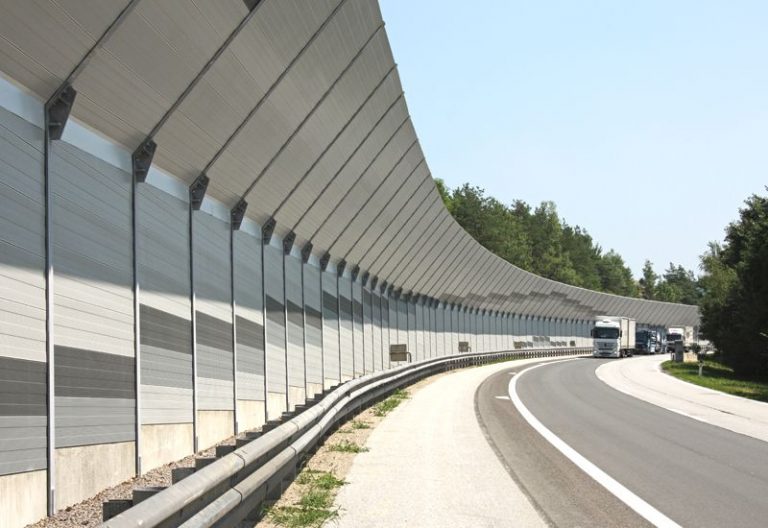Are Sound Barriers in Construction a Smart Investment, or Just a Way to Satisfy Regulations?
Walk by any construction site and you’ll probably see tall panels or thick sheets wrapped around the perimeter. They might look like just another safety measure, but these are sound barriers—and they’re doing more than just keeping the dust in and the curious out.
In many urban centres, noise pollution from construction has become a growing concern. With residential buildings, offices, schools, and hospitals often situated near ongoing developments, the demand for noise control is higher than ever.
But here’s the real question: Are sound barriers actually adding value to construction projects, or are they simply being installed to meet regulatory requirements? Let’s dig into both perspectives—and see if there’s more to this “barrier” than meets the ear.
The Growing Problem of Construction Noise
Before we weigh the pros and cons of sound barriers, it’s important to understand the problem they’re trying to solve.
Construction noise isn’t just annoying—it can genuinely impact health and wellbeing. Prolonged exposure to high decibel levels can lead to:
- Stress and fatigue
- Sleep disturbances
- Hearing problems
- Reduced concentration for those living or working nearby
And if you’re managing a construction project near a school, office, or residential estate, it’s not just about noise—it’s about community tolerance. The more noise you create, the more complaints you’re likely to get—and in the age of social media, a single unhappy resident can spark a wave of negative publicity.
Regulations Are Getting Stricter—For a Reason
Governments aren’t turning a blind eye to this issue. In Singapore, for example, the National Environment Agency (NEA) enforces strict noise limits for construction activities, especially during non-working hours or near residential zones. Failing to comply can result in fines, work suspensions, or loss of contracts.
However, meeting regulations shouldn’t be the only reason to use sound barriers. Sure, they help you stay on the right side of the law—but if used strategically, they can also improve your efficiency, reduce costs, and protect your long-term reputation.
Sound Barriers as a Strategic Asset
Let’s move beyond the checkbox mindset and explore how sound barriers can be an actual investment rather than a compliance obligation.
Here’s what high-quality sound barriers bring to the table:
Community Trust and Brand Reputation
If you’re working in a residential area, the local community becomes part of your extended environment. Using noise control solutions demonstrates empathy and professionalism. It says, “We care about the people living next door.”
And when you show that kind of consideration, you’re more likely to win public support, not just for the current project, but for future ones too.
Health and Safety for Workers
Construction workers are constantly surrounded by noisy equipment. While ear protection is essential, sound barriers help reduce ambient noise across the entire site. That means fewer distractions, better communication among workers, and a more manageable auditory environment.
Reduction in Project Delays
Noise complaints can cause temporary shutdowns, especially if you’re found violating local regulations. By proactively managing noise with sound barriers, you reduce the risk of interruptions, allowing work to continue smoothly.
Reusability and ROI
Many modern barriers, like portable acoustic panels or sound blankets, are reusable. This means you can transport them from one site to another, making the initial investment more cost-effective in the long run.
The Common Pushback: “But They’re Expensive”
True—sound barriers do require upfront investment. But that cost needs to be weighed against the potential risks of not using them:
- Legal penalties
- Negative press or social media backlash
- Project shutdowns
- Delayed handovers
- Lost business opportunities
Think of it this way: spending a bit more upfront can save you thousands—or even millions—in long-term consequences.
Plus, with innovations in construction noise control, there are now modular, lightweight, and cost-effective sound barrier options available that balance affordability with performance, proving that good noise control doesn’t have to break the bank.
But Can’t We Just Work More Quietly Instead?
Some developers try to avoid barriers by adjusting their operations:
- Limiting work hours
- Using quieter machinery
- Rotating noisy tasks across different timeframes
These are definitely great practices and should be part of any noise management strategy. But let’s be real—construction is inherently loud. Certain tasks (like pile driving or demolition) can’t be done silently, no matter how careful you are.
Sound barriers don’t replace smart planning—they complement it. When used in tandem with quieter equipment and better scheduling, they help create a complete noise control strategy.
A Quick Look at Real-World Use Cases
Let’s put this into context.
Urban MRT Projects
Major MRT (Mass Rapid Transit) developments in Singapore involve construction right in the middle of high-density urban areas. Sound barriers are not just used—they’re custom-designed to blend into the surroundings while significantly cutting down noise pollution for nearby residents.
Commercial Projects Near Offices
Office buildings require a quieter environment for productivity. Developers who use sound barriers for construction projects avoid disrupting business operations, protecting their own reputation and reducing client friction.
Neighbourhood Redevelopments
Many landed property redevelopments take place in close-knit neighbourhoods. Sound barriers help maintain community goodwill, making it easier for developers to secure repeat business or client referrals.
Final Thoughts: Investment or Obligation?
At the end of the day, sound barriers are both a regulatory requirement and a smart business decision.
If you only see them as a way to “avoid getting in trouble,” you might miss out on their full potential. When used thoughtfully, they can help you build better relationships, finish projects faster, and create safer, quieter environments for everyone involved—both inside and outside the construction zone.
So, next time you’re budgeting for your next project, don’t treat noise control as an afterthought. Instead, ask: What would it cost me if I don’t invest in this?
In a world where community trust and brand image can make or break a business, sound barriers might just be one of the best long-term investments your construction team can make.




